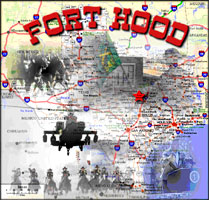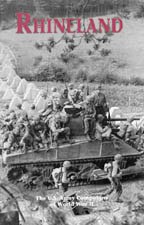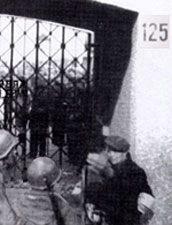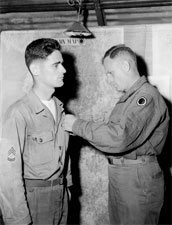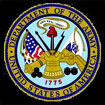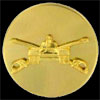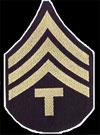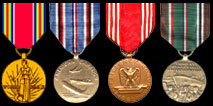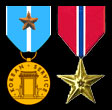| North
High School Wall of Honor Richard Arthur Morris Class of June, 1943 |
 |
||||||||||||||||||||||||||||||||||||||||||||||||||||||||||||||||||||||||||||||||||||||||||||||||||||||||||||||||||||||||||||||||||||||||||||||||||||||||||||||||||||||
| Research done by Claradell Shedd, Class of 1953. PAGE IN PROGRESS. | |||||||||||||||||||||||||||||||||||||||||||||||||||||||||||||||||||||||||||||||||||||||||||||||||||||||||||||||||||||||||||||||||||||||||||||||||||||||||||||||||||||||
| Richard Arthur Morris | |||||||||||||||||||||||||||||||||||||||||||||||||||||||||||||||||||||||||||||||||||||||||||||||||||||||||||||||||||||||||||||||||||||||||||||||||||||||||||||||||||||||
| Richard was a member of North High's class of June, 1943. His next of kin were listed as Mr. A.R. Morris, 202 East Euclid Avenue, Des Moines, IA. Richard's service number was 37676194. | |||||||||||||||||||||||||||||||||||||||||||||||||||||||||||||||||||||||||||||||||||||||||||||||||||||||||||||||||||||||||||||||||||||||||||||||||||||||||||||||||||||||
|
|||||||||||||||||||||||||||||||||||||||||||||||||||||||||||||||||||||||||||||||||||||||||||||||||||||||||||||||||||||||||||||||||||||||||||||||||||||||||||||||||||||||
| *Camp Campbell,
KY The site for Camp Campbell was selected on July 16, 1941, and the Title I Survey was completed November 15, 1941, coincidentally the same time the Japanese Imperial Fleet was leaving Japan home waters for Pearl Harbor, with construction beginning January 12, 1942. Within a year, the reservation designated as Camp Campbell was developed to accommodate one armored division and various support troops, with a total size of 102,414 acres (414 km2), and billets for 2,422 officers and 45,198 enlisted personnel. Due to its close proximity to Clarksville, Tennessee, the War Department on March 6, 1942, designated Tennessee as the official address of the new camp. This caused a great deal of confusion, since the Headquarters was in Tennessee and the post office was in Kentucky. After many months of mail delivery problems, Colonel Guy W.Chipman requested that the address be changed to Camp Campbell, Kentucky. The War Department officially changed the address on September 23, 1942. Early in the summer of 1942, the post's initial cadre, one officer and 19 enlisted men, arrived from Fort Knox, Kentucky. From that time until the end of World War II, Camp Campbell was the training ground for the 12th, 14th and 20th Armored divisions, Headquarters IV Armored Corps and the 26th Infantry Division. In the spring of 1949, the 11th Airborne Division arrived at Campbell following occupation duty in Japan. The 11th was in residence there until early 1956. By April 1950, the post had evolved from a wartime training camp to a permanent installation and was renamed Fort Campbell. **20th Armored Division The 20th Armored Division departed Boston on 5 February and arrived at Le Havre, France, 18 February 1945. On its arrival, SHAEF discovered that the division required an unprecedented amount of additional training before being ready for combat. It was sent to Buchy for a month of training before being deemed acceptable for combat duty. It then moved through, Belgium to Langendernbach, Germany, 10 April. After giving serious thought to breaking up the new division to provide replacements for the veteran armored divisions under his 12th U.S. Army Group, General Omar N. Bradley, sent the unit to Marktbreit, where the division was attached to the III Corps; 20 April. Three days later, it was detached and reassigned to the XV Corps, Seventh Army, at Würzburg, Germany. Elements of the division first saw action as Task Force Campbell when a false surrender by the enemy resulted in fighting in the town of Dorf, 25 April. The division assembled near Deiningen and reconnoitered for routes to the Danube. The Danube was crossed, 28 April, the 20th meeting sporadic, light resistance. Elements seized the bridge over the Paar river at Schrobenhausen and secured crossings over the Ilm River. The only element of the 20th to participate in a serious engagement was the 27th Tank Battalion. The 27th Tank was attached to the veteran 42nd Infantry Division during its attack on Munich, April 29–30. The rest of the 20th had been ordered off the roads leading into Munich on 28 April to allow the 42nd and 45th Infantry Divisions to attack Munich. The division crossed the Inn River at Wasserburg on 3 May, entered Traunstein, 4 May, and was moving toward Salzburg when it received word that hostilities would cease in Europe. The division is credited with only eight days in combat losing only 46 men killed in action and 134 wounded. The division returned to the U.S. in August 1945 and was slated to invade Japan, but after the atomic bombs were dropped it was inactivated 2 April 1946 at Camp Hood in Texas. Richard's personal notes re 20th Armored Division: The 20th Armored Division arrived at LeHavre, France February 16, 1945. After training at Buchy, it moved through Belgium to Langendernbach, Germany on April 10. At Marktbreit, the Division was attached to the II Corps on April 20. Three days later, it was detached and reassigned to the XV Corps, 7th Army, at Wurzburg, Germany. Elements of the Division first saw action as Task Force Campbell when a false surrender by the enemy resulted in fighting in the town of Dorf on April 25. The Division assembled near Deiningen and reconnoitered for routes to the Danube. On April 28, the Danube was crossed, meeting sporadic resistance. Elements seized the bridge over the Paar River at Schrobenhausen and secured crossings over the Elm River. The 20th attacked Munich on April 29, smashing the fanatical opposition of the SS Barracks and Antitank School, and capturing the city the next day. The Division crossed the Inn River at Wasserburg on May 3, entered Traunstein on May 4, and was moving toward Salzburg when it received word that hostilities would cease in Europe. ***Dachau, Germany Concentration Camp Over its twelve years as a concentration camp, the Dachau administration recorded the intake of 206,206 prisoners and 31,951 deaths. Crematoria were constructed to dispose of the deceased. These numbers do not tell the entire story, however. Although there is no evidence of mass murder within the camp — by methods other than poor sanitation, deprivation of medical care, withholding of nutrients, medical experiments, or beatings and shootings for infractions of the rules or at random — beginning in 1942 more than 3166 prisoners in weakened condition were transported to Hartheim Castle near Linz and there were executed by poison gas for reason of their unfitness. In 1941 and 1942 an unknown number of prisoners of war from the Soviet Union were executed by shooting at the camp's surrounding firing ranges, some for target practice and for sport. Note regarding entry from the Arbeit Macht Frei Gate. http://www.scrapbookpages.com/DachauScrapbook/DachauLiberation/LiberationDay2.html Two Divisions of the US Seventh Army were involved in the liberation of the Dachau main camp on April 29, 1945, and with each passing year, the argument grows more heated over which division really liberated the camp, the 42nd Infantry Division or the 45th Infantry Division. The 20th Armored Division was providing support and they are included as liberators of Dachau by the US Army. However, Japanese and African-American veterans have also made claims that their divisions or battalions liberated Dachau. Read the chronology of April 29, 1945, the day Richard Morris was in a half track at the rear gate of Dachau. http://www.humanitas-international.org/archive/dachau-liberation/ Richard's notes on "A Labor of Love" (rehabilitation field) Vocational Rehabilitation was my lifetime career and, back in 1956 when I entered this field, the US Congress had just passed the first federal/state rehabilitation program for all Americans. President Eisenhower saw how many disabled WWII veterans were retrained for productive lives and felt the same program should be made available to all civilians. I worked for public as well as private agencies. My various rehabilitation assignments included serving the physically, mentally, and emotionally handicapped; first, as an outreach counselor in six rural counties in southwest Iowa and then as a resident vocational rehabilitation counselor in a state mental hospital. Later I was a director of social and vocational rehabilitation programs for Des Moines Goodwill at both their industrial and residential facilities. I designed a residential program to serve 110 chronic mentally ill persons formerly housed at the Polk County Poor Farm where they were all locked in separate male and female wards 24 hours a day. In our Goodwill residential facility, men and woman had separate rooms, but were located in the same hallway. There were no locked doors, and the men and women ate together in one dining room, something they had never done at the County Home. The Iowa State Health Department said this could not be done, but I had the pleasure of proving them wrong. In adddition to the above assignments, I worked as an instructor/counselor at the Iowa Blind Training Center. Lastly, I was the Outpatient Services Director at a tri-county Drug and Alcohol Detox Center. Our treatment used the AA 12-step program. People are handicapped in many different ways. For example, the mentally ill often think they can't handle job stress; they need to learn that the stress in a hospital ward or at home can be worse than stress on the job. The same is true for the physically handicapped and the blind; they can be crippled by the thought that they cannot perform adequately on the job. Men and women who have been incarcerated have a serious hangup about being socially rejected and never being trusted. I have learned that we are not good judges of our own strengths or weaknesses; we tend to either understate or overstate our abilities. The work of the rehabilitation counselor is to help the client see himself/herself as an acceptable and employable person in the community. The counselor and client must work together to develop a realistic rehabilitation plan that gives the client the job and social skills needed for entry into the competitive labor market. After establishing a trusting relationship, I would say the most important traits for a good counselor are patience, respect for the other person's opinion, and friendly persuasion. People would ask me, "don't you get depressed trying to help disabled people?", and I would reply, "No, doing rehab work is for me a labor of love." Developing a feasible rehabilitation plan means a plan that both the client and the counselor believe is obtainable. I believe we change a little every day learning from the world around us; so our stated vocational objective is never written in stone. Hence, I would tell all my clients the old Chinese sayind, "A Wise man will change his mind...a fool never does." |
|||||||||||||||||||||||||||||||||||||||||||||||||||||||||||||||||||||||||||||||||||||||||||||||||||||||||||||||||||||||||||||||||||||||||||||||||||||||||||||||||||||||
|
|||||||||||||||||||||||||||||||||||||||||||||||||||||||||||||||||||||||||||||||||||||||||||||||||||||||||||||||||||||||||||||||||||||||||||||||||||||||||||||||||||||||
|
|||||||||||||||||||||||||||||||||||||||||||||||||||||||||||||||||||||||||||||||||||||||||||||||||||||||||||||||||||||||||||||||||||||||||||||||||||||||||||||||||||||||
|
|||||||||||||||||||||||||||||||||||||||||||||||||||||||||||||||||||||||||||||||||||||||||||||||||||||||||||||||||||||||||||||||||||||||||||||||||||||||||||||||||||||||
|
|||||||||||||||||||||||||||||||||||||||||||||||||||||||||||||||||||||||||||||||||||||||||||||||||||||||||||||||||||||||||||||||||||||||||||||||||||||||||||||||||||||||
| 11/14/10. Living in CA. | |||||||||||||||||||||||||||||||||||||||||||||||||||||||||||||||||||||||||||||||||||||||||||||||||||||||||||||||||||||||||||||||||||||||||||||||||||||||||||||||||||||||
| Music: "Wind Beneath My Wings" | |||||||||||||||||||||||||||||||||||||||||||||||||||||||||||||||||||||||||||||||||||||||||||||||||||||||||||||||||||||||||||||||||||||||||||||||||||||||||||||||||||||||
| Home
|
Back/allyears |
WWI |
WWII |
Korea |
Vietnam |
Afghanistan/Iraq |
Lyrics
|
Refs/Awards |
Contact ©2025-csheddgraphics All rights reserved. All images and content are © copyright of their respective copyright owners. |
|||||||||||||||||||||||||||||||||||||||||||||||||||||||||||||||||||||||||||||||||||||||||||||||||||||||||||||||||||||||||||||||||||||||||||||||||||||||||||||||||||||||


